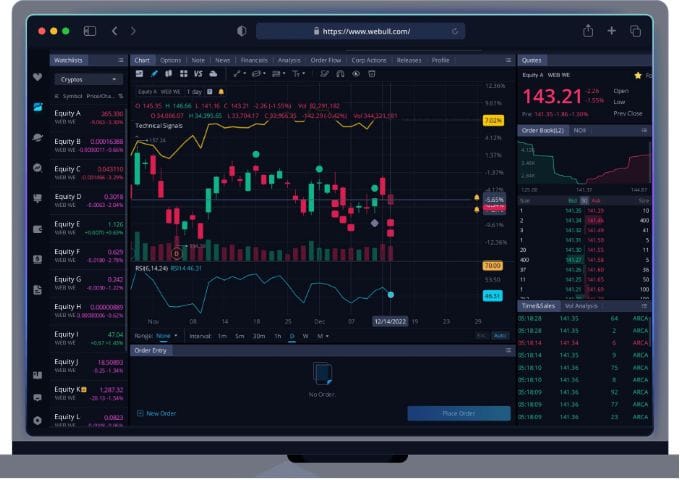The 4 BEST Investing Apps For Beginners (2024/2025)
Investment is one of the most successful ways to gradually increase wealth, generate passive income, and achieve financial independence. Compound interest, also sometimes known as “The Snowball Effect,” explains why this is the case: as you invest, your money grows, and that growth gradually spurs on still more growth, much like a snowball expands in size as it rolls down a hill. What’s surprising is that 42% of Americans don’t own stocks, and if you’re one of them, know that the earlier you start, the better.
Choosing the Right Investing Platform
Now, I will say the number of investing apps out there can make it difficult for a beginner to choose. You could use Stash, Acorns, Robinhood, Webull, M1 Finance, SoFi, Public.com, Fidelity, Vanguard, Charles Schwab, Betterment, Wealthfront, TD Ameritrade, Interactive Brokers, Tastytrade, or even Moomoo. Luckily, I’ve spent a lot of time researching and testing many of these apps, and I’ve narrowed it down to four of the best ones for you to consider today.
Fidelity: A Leading Brokerage Firm
The first one is Fidelity. Fidelity is one of the largest brokerage firms in the world, with nearly 50 million investors and over $10 trillion in assets under management. The company has been around for over 75 years and is known for managing mutual funds, retirement services, wealth management, and more. While Vanguard and Charles Schwab are also solid brokerage firms, Fidelity has always stood out to me for having the clearest and most professional platform.
When I first started on Fidelity, they charged nearly $5 per trade, but now they offer zero commissions, which is the standard across platforms. I’ll talk about registration bonuses later, but Fidelity doesn’t offer them as some of the other sites do. I adore Fidelity because I feel like I use their platform to make smarter investing selections and because it’s simpler to concentrate on long-term investments rather than stock trading on the open market. Speaking of long-term investing, Fidelity is known for its mutual funds, such as the Fidelity 500 Index Fund (FXAIX), which is one of my favorites.
Zero-Fee Index Mutual Funds and Retirement Services
Fidelity comes first. With more than $10 trillion in assets under management and close to 50 million investors, Fidelity is one of the biggest broking houses globally. With more than 75 years of experience, the organisation is well-known for its wealth management, retirement services, and mutual fund management. You can manage your own investments or opt for automated strategies through Fidelity Go, their robo-advisor.
Another option is creating a personalized stock portfolio through FID Folios, or you can choose wealth management services where a dedicated advisor provides customized planning and management. Additionally, Fidelity has physical branch locations where you can ask questions and learn more about their services. If you’re interested in retirement accounts, Fidelity may be the best option for you.
SoFi: High-Yield Savings and Investing
SoFi, one of my favourite platforms, is up next. Their investing platform and high-yield savings account are amazing. My income is deposited directly into my account, and I can effortlessly move any excess funds to my investing account. Right now, SoFi gives a 4.6% yield on cash, a much greater rate than typical banks like Chase, who only give out 0.01%.
Dividend Portfolio and Automated Investing
I’ve started a dividend portfolio on SoFi because it’s easy to track contributions and dividend payouts. If I ever want to use dividends as income, I can quickly transfer them back to my high-yield savings account. SoFi also allows you to set up recurring investments, whether it’s weekly, bi-weekly, or monthly. You can link these investments to any account, like their savings account in my case.
SoFi also stands out with its automated investing feature, which is their robo-advisor. It builds a portfolio for you with no advisory fees, and you only need $1 to get started. You input your risk tolerance—whether conservative, moderate, or aggressive—and they construct a portfolio containing index funds like the S&P 500. This is great for beginners who aren’t sure about stock picking. If you’re already using SoFi’s high-yield savings account, it makes sense to open an investment account as well.
Webull: Advanced Tools for Investors
Webull is the third platform. Webull offers a comprehensive range of financial solutions to almost 20 million people internationally. Advanced tools, thorough market analysis, longer trading hours, and paper trading—which lets you practise trading without utilising real money—are some of the platform’s unique features.
Customization, Paper Trading, and Robo-Advisor Features
One feature I love is that if you’re on a computer, you can create a default layout for your homepage and customize it however you like. You can add widgets to display the information that matters most to you. Webull provides more data than other investing apps, making it a great platform for those who like to stay updated with market trends. You can also create different watchlists to track the stocks you’re interested in.
Another unique feature of Webull is their paper trading page, where you can simulate investments and track your performance with fake money. They also have a cash management account that’s FDIC-insured up to $1 million and offers a 5% yield with no fees. Webull also provides a robo-advisor for automated investing, as well as options trading, with an entire page dedicated to this feature.
Coinbase: The Crypto Investment Platform
Last but not least is Coinbase, a publicly listed business with a market cap of more than $60 billion. Coinbase is a cryptocurrency-focused platform, in contrast to the other ones I’ve listed. The biggest cryptocurrency exchange in the United States, according to CoinMarketCap, is Coinbase. In my opinion, investing in cryptocurrencies is a terrific way to diversify your portfolio by exposing it to alternative markets.
Crypto, NFTs, and Staking Options
The Coinbase platform is dependable, user-friendly, and tidy. You may track individual investments, make watchlists, and view the historical performance of your portfolio. With over 100 nations of service, Coinbase is also considered the most reliable cryptocurrency platform in the United States, the United Kingdom, and Germany. Investing in NFTs (non-fungible tokens) is an option in addition to purchasing cryptocurrency.
One downside to Coinbase is the transaction fees, but if you’re serious about crypto, you can opt for a Coinbase One account, which offers zero trading fees up to $10,000 worth of crypto transactions monthly for a $30 monthly fee. With this account, you also get boosted rewards, exclusive tax benefits, and more research tools.
Summary of the Best Investing Platforms
In summary, Fidelity is best for overall use, especially for retirement services. SoFi is excellent for linking high-yield savings with investing, especially for dividends. Webull is ideal for advanced investors who want more market research and features, and Coinbase is perfect for cryptocurrency investors.
FAQs: The 4 BEST Investing Apps For Beginners (2024/2025)
Are investing apps worth it?
What is the safest place to invest money?
What should I start investing in?
Almost all of your money can be invested in equities if your savings objective, such as retirement, is more than 20 years away. For most people, however, investing in stocks is best done through low-cost stock mutual funds, index funds, or exchange-traded funds (ETFs). This is because selecting individual stocks can be difficult and time-consuming.









